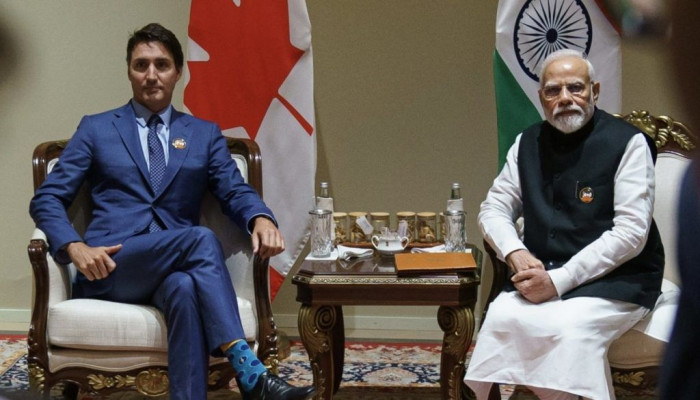India has made great progress towards achieving a low-carbon economy. Further onward movement is contingent on the implementation of plans.
According to the latest World Bank report, India has doubled its Gross Domestic Product (GDP) within a decade which stood at $2.597 trillion at the end of 2017. Amid the Asian bigwigs like China slowing down, India is bending the odds by posting impressive growth. According to a report by The International Monetary Fund (IMF), India’s economy is projected to grow by 7.4 per cent this year and 7.8 per cent in 2019. This stellar performance has powered our country ahead of even France which got relegated to the seventh position as per the World Bank report. These developments are heartening and instill pride in us as Indians, but the cost at which this progress is being posted is too steep. The very same cities that are the engines of growth are sinking with crumbling infrastructure and rising emission levels that are slowly rendering places unfit for human habitation.
What ails our cities? Pretty much one would say. According to the report, carbon footprints of 13,000 cities, as of June this year in the National Capital Region of Delhi has the highest annual carbon footprint in the country. In fact, Delhi’s annual Co2 emission of 69.4 million tonne is equal to the Co2 emission of Bengaluru, Hyderabad and Chennai put together. When it comes to per capita CO emission, Chandigarh and Vadodara are far ahead of the rest with 3.9 tonne and 3.5 tonne respectively. Riding on the backdrop of increasing Co2 levels, extreme weather events have already started affecting Indian cities with frightening frequency. The report estimates that a record 360 million people will be exposed to extreme heat in 142 Indian cities by 2050 if rapidly rising Co2 levels and global warming continue. Temperatures in three Indian cities — Chennai, Mumbai and Delhi — in the last five decades have already seen a steady rise. In Chennai alone, temperature has increased by an astonishing 0.9°C since 1960-70.
The link between carbon emission and heating up of the world has been long established. The cities, which will emit more Co2, will see a faster rise in temperature as more Co2 concentration in the atmosphere means intense absorption of solar heat. Given this, the plight of the Indian cities can only get worse from the current position unless some radical measures are taken to drive down the carbon emissions. By 2030, Indian cities will produce 70 percent of the country’s wealth and be home to 590 million inhabitants. This will put additional burden on the environment as carbon emissions will surely rise unless decarbonisation strategies are implemented immediately.
The Government has been aware of the spiralling levels of emission. To curb the same, it has announced an ambitious target to make all new vehicles to be electric by 2030 — starting with taxis, e-rickshaws and buses and eventually, private vehicles. This by itself will reduce vehicular emissions, improve air quality and reduce dependence on foreign oil. But in practice, it sees like a lofty plan that has not accounted for some difficult challenges such as how the cities will negotiate the rise in vehicles with the implications on other urban objectives — such as exacerbated congestion and the need for an increased share of public transit. This proves that policy making and announcements must not dwell upon easier matters at hand. They must strive to solve complex issues and challenges first.
A sector-wise revamp is one method to achieve rapid decarbonisation of our cities. Residential emissions, transport emissions and commercial emissions must be identified and controlled. Limiting the registration of new vehicles or making registration of the same very expensive like Singapore can dissuade new vehicle purchases. Similarly, a cap can be put on how many new models vehicles a manufacturer can launch in the market. This will curtail rampant purchases. Instead, the vehicle manufacturer must be given full freedom and incentive to launch vehicles on renewable energy. These measures alone can contribute majorly towards reduction in carbon footprint.
Similarly, residential sector must be made aware of the grim situation in our cities due to the spiralling emissions. They must be encouraged to adopt energy-efficient appliances and buildings. The process of awareness and eventual adoption of the energy saving measures may take time and seem like an uphill task, but when sufficient traction is achieved, the benefits of the same travelling by word of mouth will themselves turn the decarbonisation drive into a full-fledged movement. A notable aspect here is that most of the people in our cities reside in multi-storied complexes without access to a terrace. This limits the option to set up solar panels for energy generation and hot water. This issue must be solved by the Government and RWAs. They must come together to ensure that every building has a common solar solution installed that provides benefits to all residents and in turn not only uses the idle space of the terraces across the city but also reduces carbon emission by reducing dependence on conventional coal based power.
Solutions towards a carbon emission free environment are many, the intention and implementation have to be present.
Writer: Kota Sriraj
Courtesy: The Pioneer








 OpinionExpress.In
OpinionExpress.In















Comments (0)